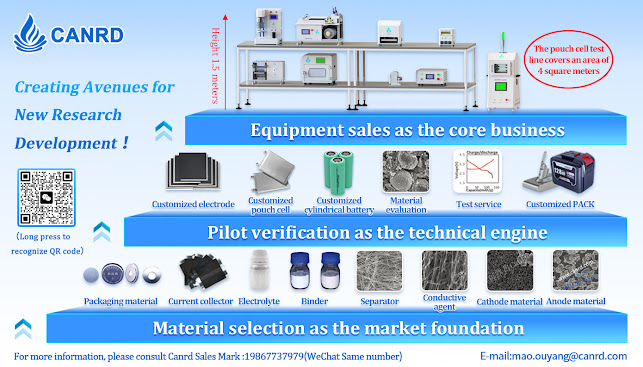1. Basic introduction of lithium-ion button battery
Button lithium-ion battery is a rechargeable battery that uses lithium ions as charge carriers. It consists of positive electrode, negative electrode, electrolyte and diaphragm. The positive electrode usually uses lithium compounds, such as lithium cobalt oxide, lithium iron phosphate, etc. The negative electrode generally uses graphite material. The electrolyte is an organic solution containing lithium salts that can provide a medium for ion transmission. The diaphragm is used to isolate the positive and negative electrodes to prevent short circuits.
2. Application and Use
Button lithium-ion batteries are widely used in mobile and smart electronic devices, power tools, electric vehicles, etc. They have the advantages of high energy density, long cycle life, low self-discharge rate, etc., and have become an important energy source in modern electronic products and transportation tools.
3. Internal structure and components
Button lithium-ion battery is a common rechargeable battery, which consists of a shell, a positive electrode, a negative electrode, an electrolyte, a diaphragm, leads and connectors, a protection circuit and other parts.
1. Shell: The shell of a button lithium-ion battery is generally made of metal materials, such as aluminum or steel. The main function of the shell is to protect the internal components, and it also plays a role in heat and electricity conduction.
2. Positive electrode: The positive electrode is an important component of button-type lithium-ion batteries and is usually made of lithium compounds. Common positive electrode materials include lithium cobalt oxide (LiCoO2), lithium iron phosphate (LiFePO4), etc. The choice of positive electrode material directly affects the performance and safety of the battery.
3. Negative electrode: The negative electrode is another key component of button-type lithium-ion batteries and is generally made of graphite material. The graphite negative electrode has good conductivity and lithium storage properties, and can achieve the insertion and extraction of lithium ions.
4. Electrolyte: The electrolyte is an important part of button lithium-ion batteries. It is usually an organic solution containing lithium salts. The electrolyte has good ion conductivity and can enable lithium ions to migrate between the positive and negative electrodes, thereby realizing the battery's charge and discharge process. Common electrolytes include carbonate electrolytes, ester electrolytes, etc.
5. Diaphragm: The diaphragm is another important component in button-type lithium-ion batteries. It is located between the positive and negative electrodes and acts as an isolation to prevent the positive and negative electrodes from directly contacting and causing a short circuit. The diaphragm is usually made of polymer materials with good ion conductivity and mechanical strength.
6. Leads and connectors: Button lithium-ion batteries also include leads and connectors, which are used to connect the battery to the external circuit. Leads are generally made of copper or aluminum and have good conductivity. Connectors are used to connect batteries and devices. Common connectors include pins, sockets, etc.
7. Protection circuit: In order to ensure the safety and stability of the battery, button lithium-ion batteries are usually equipped with a protection circuit. The protection circuit can monitor the battery's voltage, current, temperature and other parameters. When the battery is abnormal, it can cut off the connection between the battery and the external circuit in time to prevent overcharging, over-discharging, short circuit and other problems.
4. Advantages of lithium-ion button batteries
1. High energy density: Lithium-ion button batteries have a higher energy density and can provide longer use time and greater capacity.
2. Long life: Lithium-ion button batteries have a long life and can be charged and discharged many times, and their service life can usually reach several years.
3. Fast charging: Lithium-ion button batteries have a higher charging efficiency and can more effectively convert electrical energy into chemical energy storage. Lithium-ion button batteries have a faster charging speed and can be fully charged in a shorter time.
Canrd Brief Introduce
Canrd use high battery R&D technology(core members are from CATL) and strong Chinese supply
chain to help many foreign companies with fast R&D. We provide lab materials, electrodes, custom dry
cells, material evaluation, perfomance and test, coin/pouch/cylindrical cell equipment line, and other
R&D services.
Email:contact@canrd.com
Phone/Wechat/WhatsApp:+86 19867737979
Canrd Company Vedio/Website:www.canrud.com










No comments:
Post a Comment